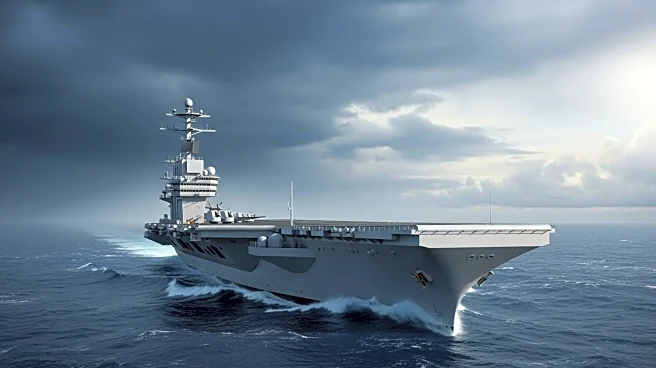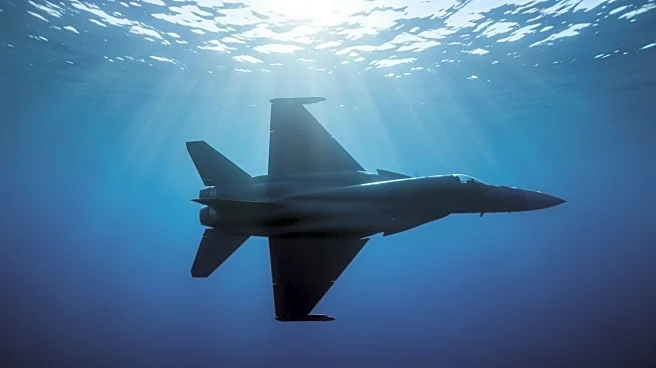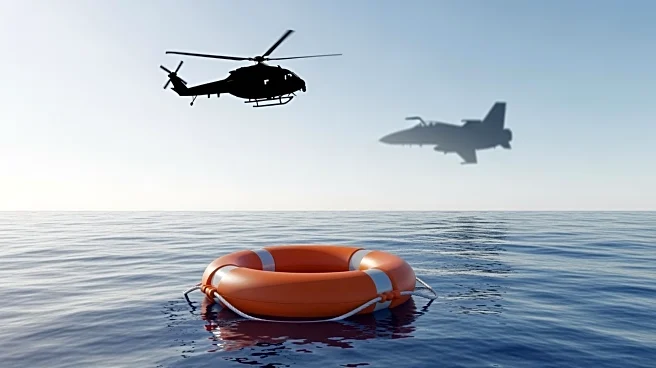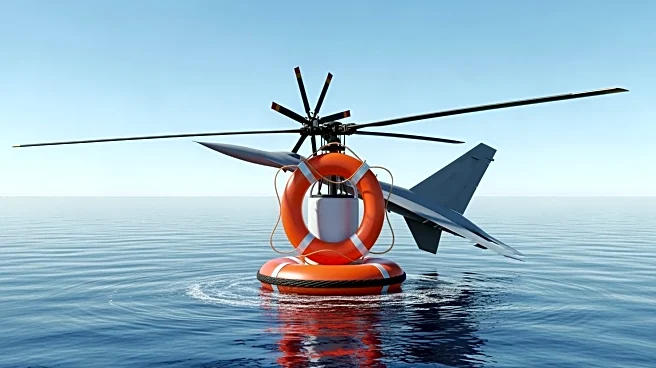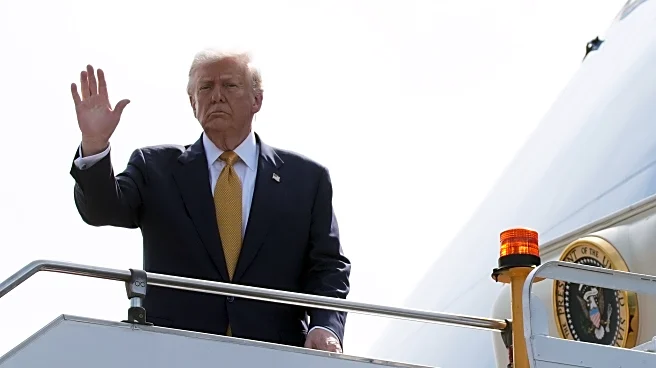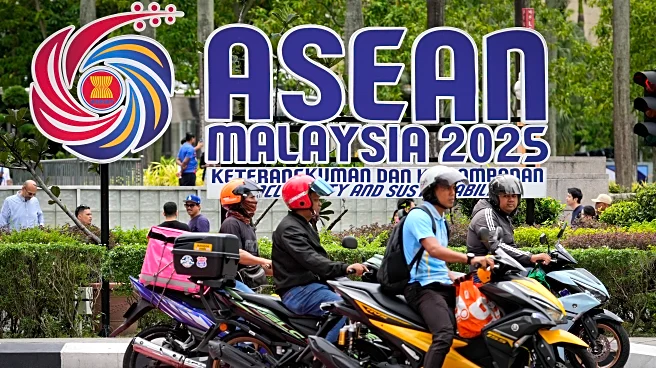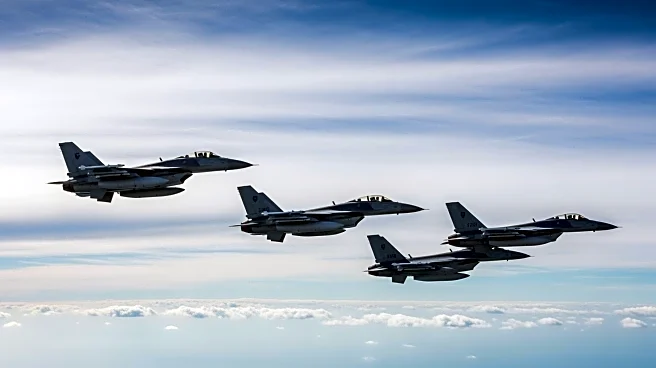What's Happening?
The U.S. Navy confirmed that a Sea Hawk helicopter and an F/A-18F Super Hornet fighter jet crashed in the South China Sea on Sunday. Both aircraft were conducting routine operations from the aircraft carrier
USS Nimitz when they went down within half an hour of each other. All crew members were safely rescued and are in stable condition. The incidents have prompted questions about the timing and reasons behind the crashes in this strategically significant region. President Trump, speaking en route to Japan, suggested that bad fuel might be a factor, though investigations are ongoing. The U.S. has been shifting its focus from Europe to the Indo-Pacific, where the South China Sea remains a contested area due to China's assertive territorial claims.
Why It's Important?
The crashes occur in a region marked by geopolitical tensions, particularly due to China's territorial claims. The South China Sea is a critical trade route, and the U.S. military presence is seen as a counterbalance to China's influence. The incidents could heighten tensions and lead to increased scrutiny of U.S. military operations in the area. The U.S. Navy's ability to operate safely in such a contested environment is crucial for maintaining regional stability. The crashes also raise concerns about the safety and reliability of military equipment, especially as the USS Nimitz, the Navy's oldest aircraft carrier, is set to be decommissioned next year.
What's Next?
Investigations into the causes of the crashes are underway, with the U.S. Navy likely to analyze the recovered aircraft for any technical failures or external interferences. The incidents may prompt a review of operational protocols and equipment maintenance. Additionally, the U.S. may face diplomatic challenges as it navigates its military presence in the Indo-Pacific region. Observers will be watching for any changes in U.S. military strategy or adjustments in its engagement with regional allies and adversaries.
Beyond the Headlines
The crashes highlight the complexities of military operations in contested regions and the potential vulnerabilities in digital supply chains that could affect military platforms. The incidents may also lead to discussions about the future of U.S. military deployments and the need for technological advancements to ensure operational safety. The geopolitical implications of these events could influence U.S. foreign policy and defense strategies in the Indo-Pacific.
